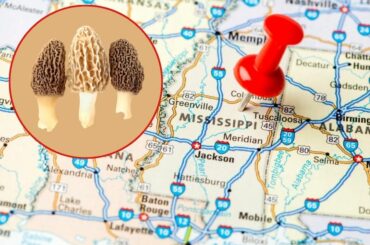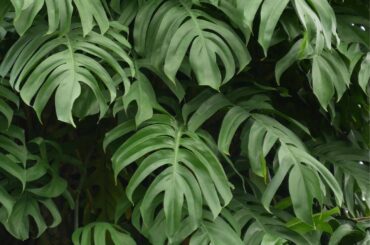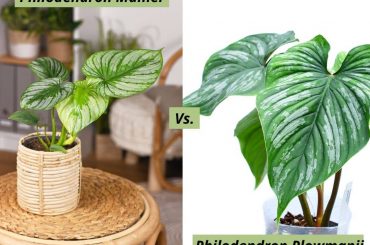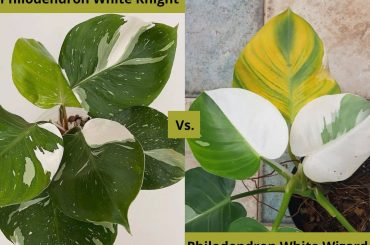Do Elephant Ears Bloom? Yes. Elephant ears rarely flower when grown in containers or as houseplants. However, they will bloom when planted outdoors in warm climates. As this plant rarely blooms, not many know what they actually look like when they do. Let’s discuss the elephant ear bloom today!
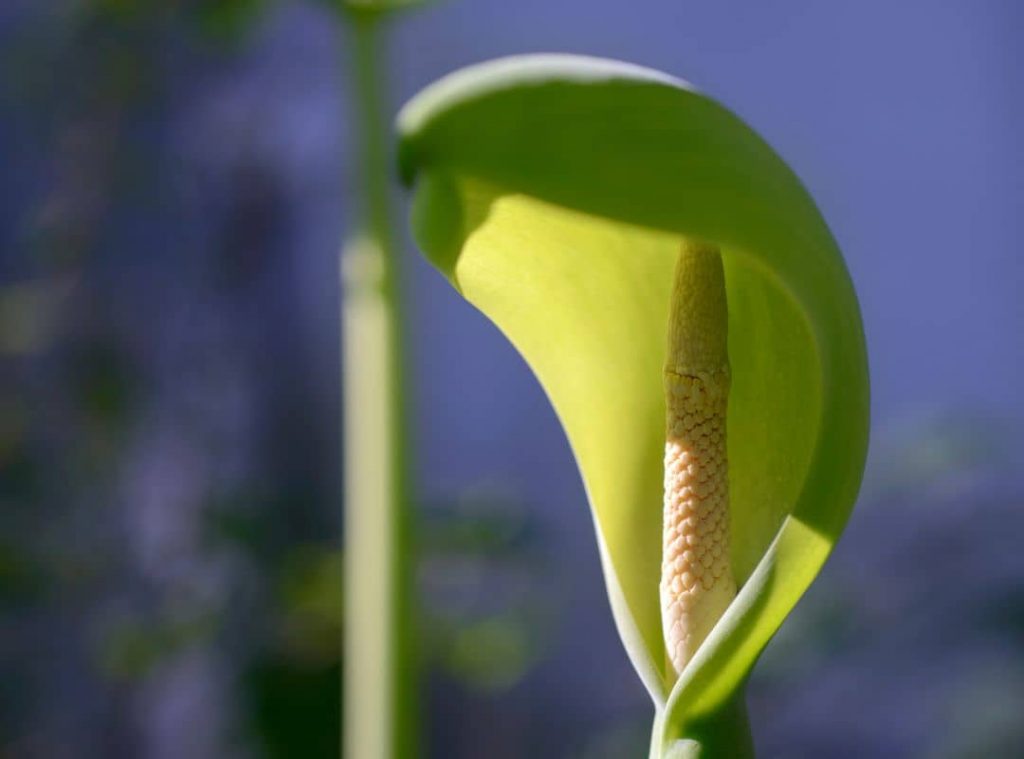
Elephant ears (Colocasia spp.) boast large, tropical-looking leaves that provide a dramatic backdrop for other plants in the garden. While most varieties are grown as annuals, they are actually tender perennials that will overwinter indoors in areas with cold winters. Wide elephant ear varieties feature showy foliage in green, bronze, or black shades. Some have variegated leaves with contrasting colors.
What Are Elephant Ears?
Contents
- 1 What Are Elephant Ears?
- 2 Do Elephant Ears Bloom?
- 3 What Does Elephant Ear Bloom Look Like?
- 4 When Do Elephant Ears Bloom?
- 5 Are Elephant Ear Blooms Rare?
- 6 How Often Does An Elephant Ear Plant Bloom?
- 7 Why Is My Elephant Ear Plant Flowering?
- 8 Should I Let My Elephant Ear Flower?
- 9 Do Indoor Elephant Ears Bloom?
- 10 Do All Elephant Ears Bloom?
- 11 Do Elephant Ears Produce Seeds?
- 12 What Are The Red Berries On Elephant Ears?
- 13 Do Elephant Ear Plants Multiply?
- 14 How To Propagate Elephant Ears?
- 15 Where Is The Best Place To Plant Elephant Ears?
- 16 How Cold Can Elephant Ears Tolerate?
- 17 How Often Do Elephant Ears Get New Leaves?
- 18 How Do You Fertilize Elephant Ears?
- 19 How Often Do You Water Elephant Ears?
- 20 How Do I Know If My Elephant Ear Is Getting Enough Water?
- 21 Related questions
- 22 Conclusion
Elephant ears are herbaceous perennials with large, heart-shaped leaves. The plants are tropical in origin and typically grow to be 2-3 feet tall. The leaves of most varieties are dark green, but there are also variegated and bronze-leaved varieties available. Many elephant ear types also have showy, purplish-black stems.
Elephant ears are grown for their dramatic foliage, which adds a tropical touch to any garden. The plants are also popular houseplants and can be grown in containers. Elephant ears are easy to care for and can be propagated by division. They typically require little maintenance, other than occasional watering and fertilization. Elephant ears are grown in USDA hardiness zones 9-11. The plants can be grown as annuals or overwintered indoors in cooler climates.
Do Elephant Ears Bloom?
While most people grow elephant ears for their dramatic foliage, the plants do occasionally bloom. The flowers are tiny and inconspicuous, usually white or green in hue. Tall, erect spikes carrying big, showy blooms can reach up to 6 feet in height.
What Does Elephant Ear Bloom Look Like?
The flowers of elephant ears are small and inconspicuous. They are typically white or green in color and borne on tall, spiky inflorescences. The inflorescences can reach up to 6 feet in height and are typically not as dramatic as the plant’s foliage.
When Do Elephant Ears Bloom?
Elephant ears typically bloom in late summer or early fall. The blooming period typically lasts for several weeks. When grown in containers or as houseplants, elephant ears rarely bloom. Some plants do not bloom at all.
Are Elephant Ear Blooms Rare?
Yes, elephant ear blooms are quite rare. The plants typically only bloom when grown in warm climates outdoors. When grown as houseplants or in containers, they rarely bloom. Some plants do not bloom at all.
How Often Does An Elephant Ear Plant Bloom?
If the plant receives perfect growing conditions, it may bloom once a year. However, most plants only bloom every few years.
Why Is My Elephant Ear Plant Flowering?
If your elephant ear plant is flowering, that means you have given perfect growing conditions to the plant. This includes plenty of warmth, humidity, water, and fertilizer.
Elephant ear plants require the following conditions to flower:
Warmth: Elephant ear plants are tropical in origin and require warm temperatures to thrive. The plants need to be grown in an area that receives full sun.
Humidity: Elephant ears also require high humidity to thrive. If the air is too dry, Elephant ear leaves will start to brown and curl.
Water: Elephant ears need to be kept moist at all times. The soil of the plant should be moist but not wet.
Fertilizer: Elephant ears also benefit from regular fertilization. Use a high-quality, all-purpose fertilizer and apply it according to the package directions.
When the plant receives all of these conditions, it will be more likely to flower.
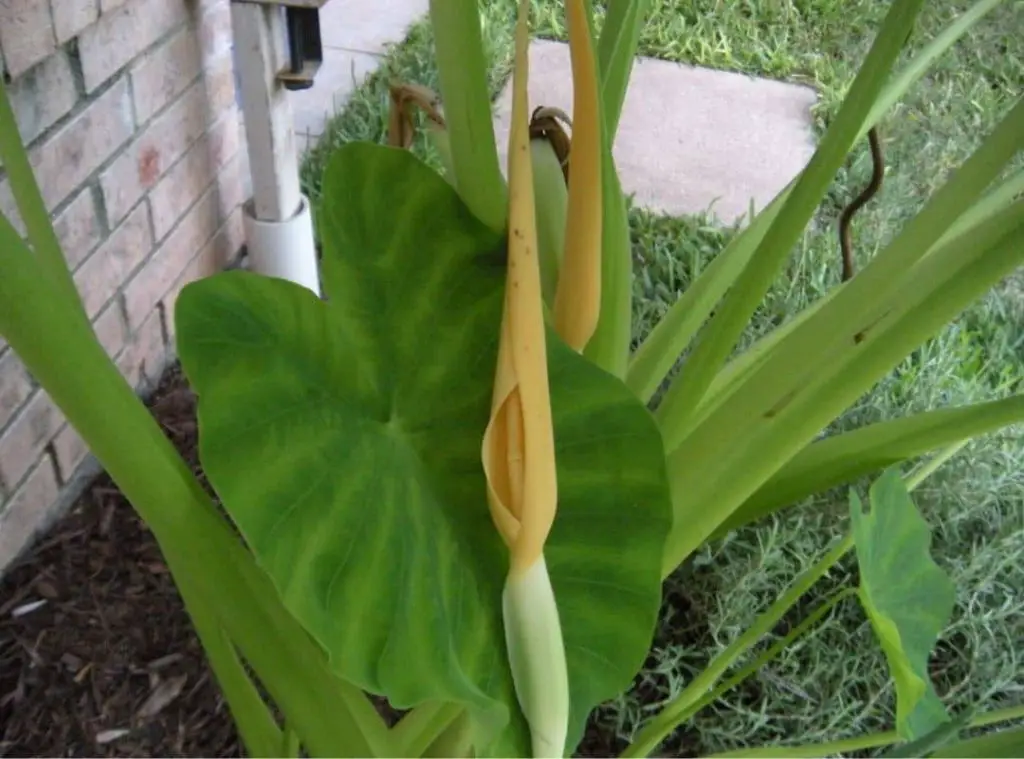
Should I Let My Elephant Ear Flower?
Yes, you should let your plant flower if it blooms. The flowers are not very flamboyant, but they are interesting to look at. Plus, they have a pleasant smell. In addition, flowering signifies the plant is healthy and happy. However, some gardeners prefer to remove the flowers so that the plant will put all its energy into growing foliage. If you decide to remove the flowers, do so as soon as they appear. Use sharp pruning shears to cut the flowering stalk down to the ground.
Do Indoor Elephant Ears Bloom?
Indoor elephant ears rarely bloom. The plants need warm temperatures, high humidity, and plenty of sunlight to flower. Most indoor environments do not provide these conditions. If your plant does bloom, the flowers will be small and inconspicuous. They are typically white or green in color and borne on tall, spiky inflorescences. The inflorescences can reach up to 6 feet in height and are typically not as dramatic as the plant’s foliage.
Do All Elephant Ears Bloom?
No, not all elephant ears bloom. Some plants do not bloom at all, while others only bloom every few years. The frequency of blooming depends on the species of plant and the growing conditions. For example, elephant ears grown in warm climates outdoors are more likely to bloom than those grown as houseplants.
Do Elephant Ears Produce Seeds?
Yes, elephant ears produce seeds. But it will take several years as this plant only blooms once it matures and receive the perfect growing conditions. These seeds are viable only a short time after they mature, so it is best to plant them immediately.
What Are The Red Berries On Elephant Ears?
The red berries that sometimes form on elephant ears are not actually berries. They are seed pods that contain the plant’s seeds. These pods are typically red or orange in color and are about the size of a small grape. When the pods mature, they split open to release the seeds. The seeds are very small, black, and shiny. You can plant them to grow new elephant ear plants. However, you should plant the seeds as soon as possible after they are released, as they lose their viability quickly.
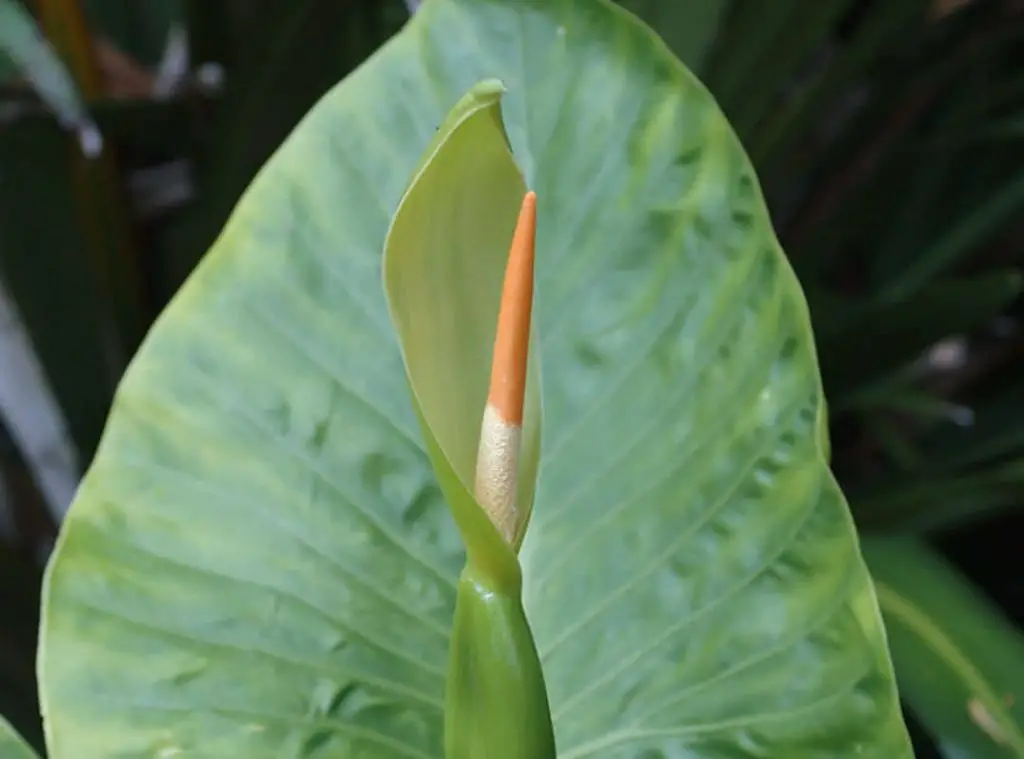
Do Elephant Ear Plants Multiply?
Yes, elephant ear plants do multiply. They typically produce offsets, which are small plantlets that form at the base of the parent plant. You can remove these offsets and plant to grow new elephant ear plants. In addition, the plant produces seeds that can be used to grow new plants. However, it can take several years for the plant to mature enough to produce seeds.
How To Propagate Elephant Ears?
Offsets or seeds can propagate elephant ears.
To propagate by offsets, simply remove the offset from the base of the plant and pot it up in moist soil. The offset will quickly develop roots and can be planted in the garden once it has rooted.
To propagate by seed, plant the seeds in moist soil as soon as they are released from the pod. Elephant ear seeds will germinate quickly and can be planted in the garden once they have sprouted.
Where Is The Best Place To Plant Elephant Ears?
Elephant ears prefer warm, humid environments. They can be grown outdoors in USDA hardiness zones 9-11. In cooler areas, you can grow them as annuals or in containers that can be brought indoors during the winter. When planting elephant ears outdoors, choose a location that receives dappled sunlight or full sun. The soil of the plant should be rich, loamy, and well-draining.
If you are growing elephant ears in containers, choose a pot that is at least 12 inches wide and 12 inches deep. Use a well-draining potting mix, and ensure adequate drainage by punching holes in the bottom of the pot.
How Cold Can Elephant Ears Tolerate?
Elephant ears are not frost-tolerant and will not survive freezing temperatures. If you live in a climate with cold winters, you will need to bring your plant indoors or grow it as an annual.
When bringing your plant indoors for the winter, choose a location that receives bright, indirect light. The temperature should be between 55-85 degrees Fahrenheit as elephant ears can’t tolerate temperatures below 50 degrees Fahrenheit.
How Often Do Elephant Ears Get New Leaves?
The frequency of new leaf growth varies depending on the species of plant and the growing conditions. However, most elephant ears will produce new leaves every few weeks during the growing season. In their active growing season (which is in Spring), you can expect an average of one leaf per month.
How Do You Fertilize Elephant Ears?
Elephant ears are heavy feeders and will benefit from regular fertilization. Use a high-quality fertilizer formulated for bulbs or tropical plants. For faster growth, use fertilizer every two weeks during the growing season.
How Often Do You Water Elephant Ears?
During the growing season, elephant ears need to be watered regularly to keep the soil moist but not soggy. Allow at least one to two-inch of soil to dry between watering. In the winter, elephant ears will go dormant and will need much less water. You should water only enough to keep the soil from drying out completely.
How Do I Know If My Elephant Ear Is Getting Enough Water?
Elephant ears need to be kept moist but not soggy. If the leaves start to wilt, that is a sign that the plant is not getting enough water. Overwatering can also be an issue as it can cause the roots to rot. If you think your plant is getting too much water, check the soil to see if it is soggy. If it is, reduce the amount of water you are giving it.
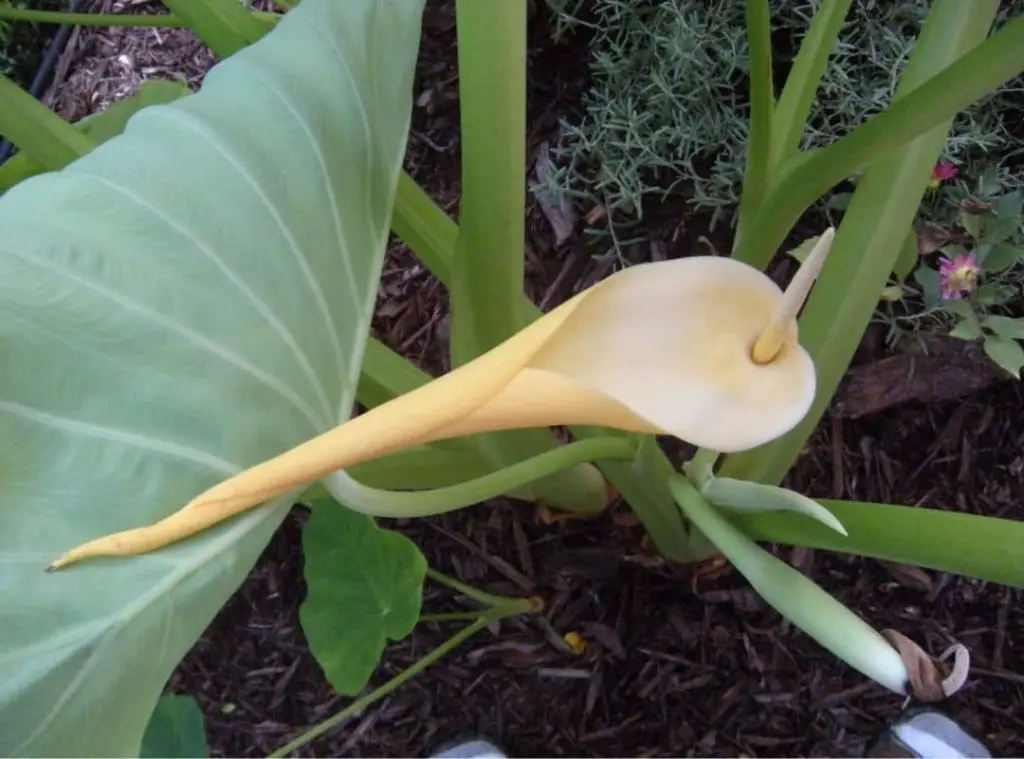
Related questions
Can Elephant Ears Grow In Aquariums?
Yes, elephant ears can grow in aquariums. These plants are frequently used as ornamental plants in fish tanks. However, they can be toxic to some fish if ingested, so it is important to research the species of fish you are keeping before adding elephant ears to your aquarium.
Can Elephant Ears Take Full Sun?
Yes, elephant ears can take full sun. However, they prefer dappled sunlight or partial shade. If you reside in a hot climate, you may need to offer some afternoon shade to keep the leaves from scorching.
Is Elephant Ear Toxic To Dogs?
Some species of elephant ears are toxic to dogs if ingested. The toxicity depends on the type of plant and the amount consumed. Some elephant ear plants are deadly poisonous to dogs, while others will only cause stomach upset. If you think your dog has eaten elephant ears, contact your veterinarian or the ASPCA Animal Poison Control Center for guidance.
Are all elephant ear plants edible?
No, not all elephant ear plants are edible. Some species of elephant ear contain calcium oxalate crystals, which can cause irritation and burn in the mouth and throat. These plants should not be consumed raw. However, cooking the plant will destroy the crystals and make them safe to eat. Other elephant ears species are edible and often used in Asian cuisine. If you are concerned about whether a plant is edible, seek advice from a knowledgeable source before consuming it.
Conclusion
Do Elephant Ears Bloom? Flowering is not common in elephant ears, but it can happen. If your plant does flower, the blooms will be small and insignificant. The main attraction of elephant ears is their large, tropical leaves. Elephant ears are easy to care for and make a great addition to any garden. With proper care, they will thrive and provide you with years of enjoyment.

